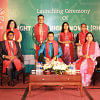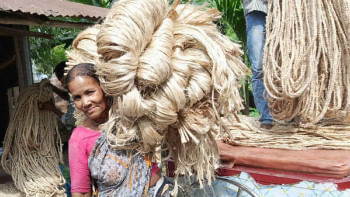The need for comprehensive sexuality education in our schools

When navigating the tightrope between a carefree childhood and forthcoming adulthood responsibilities, teenagers can never seem to catch a break. All these challenges intensify a million-fold when they hit puberty, as their bodies and brains undergo transformations that often go unexplained and unexplored. Through these turbulent times, the importance of sex education in guiding adolescents cannot be overstated.
There are many commonly-held misconceptions about sex education. To better understand what it really is about, we spoke to Dr Riad Mahmud, a health specialist at UNICEF. He explains, "Contrary to popular belief, comprehensive sexuality education (CSE) isn't exclusively about sexuality. Beyond information on safe sex and pregnancy prevention, CSE teaches people to be aware of their bodies, respect boundaries, and understand consent."
He elaborates on its importance, stating, "CSE equips adolescents with crucial knowledge, attitudes, and skills, enabling them to protect their health, well-being, and dignity."
Existing academic research echoes Dr Riad's sentiments. The 2015 Global Review by the United Nations connects CSE to improved sexual and reproductive health, leading to the reduction of STIs, HIV, and unplanned pregnancy by encouraging safer sexual practices as well as reducing sexual violence and promoting gender equality.
Despite its importance, Bangladesh lacks specific government policies regarding sex education. "CSE is not officially mentioned by the government," explains Dr Riad, "and very limited components of CSE are being implemented through various adolescent health programmes under multiple ministries like the Ministry of Health and Ministry of Education."
Hence, sex education has only been implemented in bits and pieces, almost exclusively under the National Curriculum and Textbook Board (NCTB) curriculum. The brunt of it has been included in textbooks such Physical Education and Health, Life Skill Education, Wellbeing textbooks, among a few others.
Many out-of-school interventions also exist simultaneously to the NCTB content. Jahura Begum, the principal of Udayan Higher Secondary School, recounts two UNICEF-backed events on menstruation awareness that were conducted on campus involving seminars, visual presentations, and an art competition. Dr Riad also cites the School Based Adolescent Health Program (SBAHP) and Gender Equity Movement in Schools (GEMS) to be active initiatives, particularly in rural contexts.
While sex education is technically a part of the education curriculum, its ineffective implementation leaves much to ask for. Dr Riad provides insight into some of the challenges, "Despite the inclusion of basic reproductive health education in textbooks for grades six to ten, the avoidance of the term 'CSE' stems from societal taboos surrounding sexuality, influenced by religious and cultural considerations."
This leads to crucial conversations being conducted in hushed tones or avoided entirely.
Thus, the sensitivity of certain CSE components requires teachers to have specialised training, which often isn't implemented. Dr Riad also notes, "The absence of CSE in the Teachers Training Curriculum leaves educators unprepared to deliver age-appropriate information."
Regading this, two students, Omar Faruk Saikat, a 10th-grader at UCEP Bangladesh, and Farabi Jaman Shehjadi, an HSC graduate from BAF Shaheen College, spoke of their experience. While Saikat observed many of his teachers feeling hesitant, Shehjadi opines that her teachers were actually quite comfortable teaching sex education components. This a lack of consistency in the expertise of teachers across different institutions.
Ensuring the content is age-appropriate is also important, as Srabon Chowdhury*, a teacher at Viqarunnisa Noon School & College, shares, "We don't explain things in a complicated way to young students. Younger students start out by learning general themes such as family, kindness, and respect for others' boundaries. Later, they're exposed to more mature topics such as gender-based violence, sexual consent, pregnancy, and more."
But even when CSE is internalised by students in the classroom, it's often difficult to implement it at home due to stigma. Shamima Chowdhury, a former consultant at UNICEF, explains, "Parents also need to be provided with CSE because the students otherwise cannot apply what they learn in school at home." She emphasises the importance of community buy-in as well, particularly in rural areas, ensuring students can express what they learned without inhibition.
Privilege also heavily intersects with the lack of access to sexual and reproductive health (SRH) resources. As Dr Riad points out, "Some youth, particularly those in gender diversity clusters, refrain from seeking SRH services due to a fear of identity exposure." Shamima notes, "Out-of-school children are also very vulnerable."
Moreover, CSE is yet to reach alternative streams of education like private schools and madrasas. Thus, nearly four million students remain vulnerable to misinformation and negligence towards their own bodies.
So, what can be done to improve the situation? Shamima, alluding to her work in rural Jaipurhat from 2018 to 2019, suggests that the NCTB should gradually introduce more progressive themes by "piloting" new additions to the curriculum in a select number of institutions and communities, instead of launching it directly. Principal Jahura further emphasises the need to reach more rural corners of Bangladesh where much progress is yet to be made. From the students' perspective, Shehjadi suggests that teachers should foster closer bonds with all students and not be biased, so students can properly internalise the concepts they're exposed to.
Despite the many shortcomings of the implementation of CSE, some tangible progress has still been made. Jahura notes that over the years, her student body has grown to become more open-minded toward issues like menstruation, sexuality, and puberty, crediting much of the progress to the inclusion of sex education in textbooks. "The current curriculum textbook is able to express these topics very nicely as well," she adds.
Yet, progress cannot serve as an excuse for complacency. While current initiatives are a foot through the door, we still have a very long way to go. Our youth have a right to access crucial information about their bodies, and it is our responsibility to ensure that what they're provided with is comprehensive, accurate, and inclusive.
Reference:
The United Nations (2015). Global Review finds Comprehensive Sexuality Education key to gender equality and reproductive health.

 For all latest news, follow The Daily Star's Google News channel.
For all latest news, follow The Daily Star's Google News channel. 








Comments